1. Online Content Monitoring
AI plays a crucial role in keeping children’s digital content safe. Advanced algorithms scan and filter vast amounts of online material to block violence, explicit imagery, and other age-inappropriate content before a child ever sees it. These systems use techniques like natural language processing to detect harmful language and computer vision to recognize risky images or videos. AI-driven monitoring operates continuously and at high speed, far beyond human capacity, ensuring that content on apps, streaming platforms, and websites is child-friendly. By learning from new threats (such as emerging dangerous trends or keywords), AI content filters adapt over time, constantly improving their ability to shield young users from harmful material.

In 2023, major tech platforms relied on AI moderation to police online content for minors at unprecedented scale. For example, Snapchat’s automated systems proactively detected and took action on 98% of child sexual exploitation content on its platform in the first half of 2023, a slight increase in efficiency over the previous period. In the same six-month span, Snapchat reported terminating nearly 230,000 accounts for violating child protection policies – actions largely initiated by AI-driven classifiers before any user report. This high rate of preemptive removal reflects how content monitoring AI has become both widespread and effective. Similarly, other social media companies have disclosed that over 95% of child nudity and exploitative imagery is now caught by AI filters before it ever reaches the public. The use of AI in content monitoring thus enables a level of vigilance and rapid response that vastly reduces children’s exposure to harmful online media on popular platforms.
2. Cyberbullying Detection
AI is increasingly used to detect and combat cyberbullying, making online spaces safer for children. Machine learning models analyze messages, social media posts, and chat activity for patterns of harassment – from repeated insults and name-calling to more subtle forms of exclusion or rumor-spreading. When problematic behavior is flagged, AI systems can alert parents, educators, or platform moderators in real time, enabling quicker interventions to support the child being targeted. Some AI tools even warn users as they type something mean, giving them a chance to reconsider before harm is done. By monitoring 24/7 across multiple apps and communication channels, AI can catch bullying that parents might otherwise miss. This proactive detection helps reduce the duration and severity of online bullying, aiming to spare children the emotional distress that unchecked cyberbullying can cause.

Recent data highlight how prevalent online bullying is among youth and why AI-based detection is vital. A 2023 analysis of millions of school-aged children’s online interactions found that 67% of tweens and 76% of teens had experienced some form of cyberbullying – whether as victims, perpetrators, or witnesses to bullying behavior. These incidents range from mean-spirited teasing to hateful threats and harassment, occurring on social media, gaming chats, and texting platforms. AI-powered monitoring tools are now helping manage this widespread problem: for instance, the parental control service Bark reported scanning 5.6 billion digital activities in 2023 and flagging hundreds of thousands of bullying-related events for parental review. Schools and social networks have likewise deployed AI moderators that identify abusive language and automatically filter or report it. By catching the majority of bullying episodes (often in real time), AI systems provide an extra layer of protection that wasn’t available in the past, reducing prolonged abuse and connecting at-risk kids with help sooner.
3. Location Tracking
AI enhances location tracking to keep children safe and give parents peace of mind. Modern GPS-based apps do more than just show where a child is on a map – they use intelligent features to learn routines and detect anomalies. For example, AI can define “geofences” around school or home and automatically alert a parent if a child strays outside those safe zones at unusual times. Location history can be analyzed to spot irregular travel patterns, like a route the child never takes, prompting a timely check-in. Some smartwatches and phones for kids come with built-in AI assistants that allow children to quickly signal an emergency, transmitting their precise location to parents or authorities instantly. By filtering location data through machine learning, these systems minimize false alarms (such as ignoring brief, expected detours) while zeroing in on true warnings (like a stop at an off-limits area). Overall, AI-driven tracking provides a reliable, real-time safety net – ensuring that if a child goes missing or is in danger, caregivers can respond immediately with accurate location information.
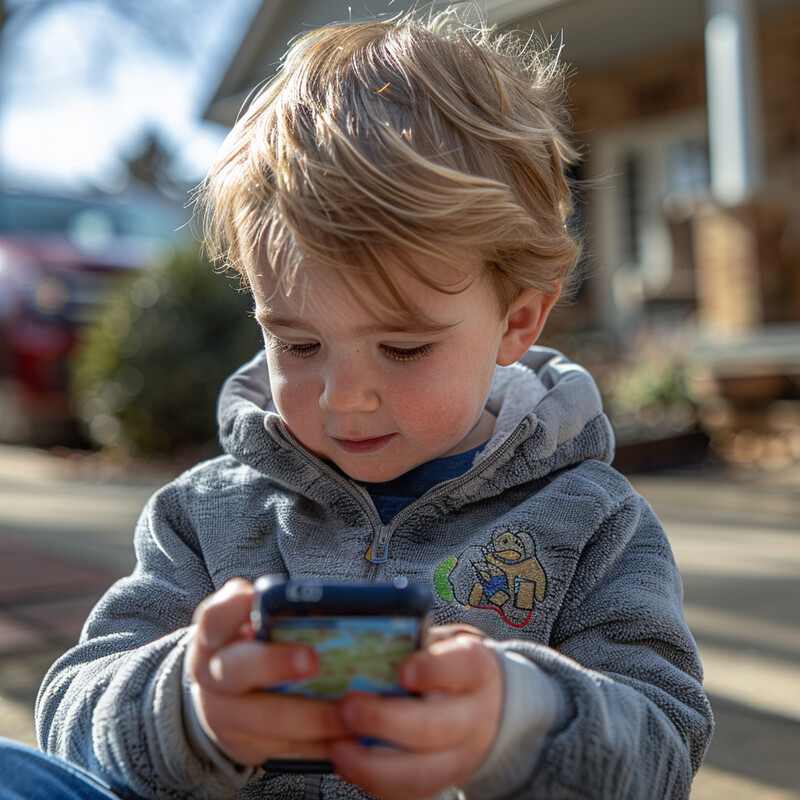
Research shows that AI-supported location tracking has quickly become a standard safety practice for families. A study published in 2023 in the Journal of Family Psychology found that about 50% of U.S. parents of adolescents use digital apps or devices to monitor their child’s whereabouts in real time. An additional segment of parents (roughly 14%) acknowledged surreptitiously tracking their teen’s location without the teen’s knowledge, highlighting how pervasive this technology has become. These AI-enhanced tracking tools often include features like customizable safe zones and automated alerts; for example, Life360, a popular family location app, notifies parents immediately if a child’s phone exits a defined school zone during school hours. Such capabilities have had concrete benefits: the same 2023 study noted that families using location tracking reported greater feelings of security and in some cases were able to intervene in potential safety issues (like a child unknowingly wandering into a high-risk neighborhood) thanks to timely AI-generated alerts. As of 2024, even privacy-conscious platforms have introduced child location safety modes, reflecting a societal shift toward using AI location analytics as a routine safeguard for children’s daily travels.
4. Facial Recognition
AI-powered facial recognition is being adopted to strengthen physical security for children in schools and public venues. These systems can automatically identify and verify individuals from camera feeds – distinguishing between students, staff, parents, and unknown persons in real time. By cross-referencing faces against approved databases (for instance, a school’s roster or a list of banned individuals), an AI system can immediately flag any unauthorized person on campus, such as a stranger in a secured area or someone on a custody watchlist attempting to pick up a child. In daily use, this technology streamlines routine safety tasks: children might enter school through an AI-verified gate rather than using easily lost ID cards, and attendance can be taken automatically as faces are recognized. In urgent situations, facial recognition can assist law enforcement in locating a missing child by scanning crowds or public spaces for the child’s face. While raising some privacy considerations, these AI systems operate under strict controls in child safety settings – focusing solely on protection by rapidly alerting authorities to potential threats like intruders or abductors. The overarching goal is to augment human oversight with tireless, instant AI vigilance wherever children gather.
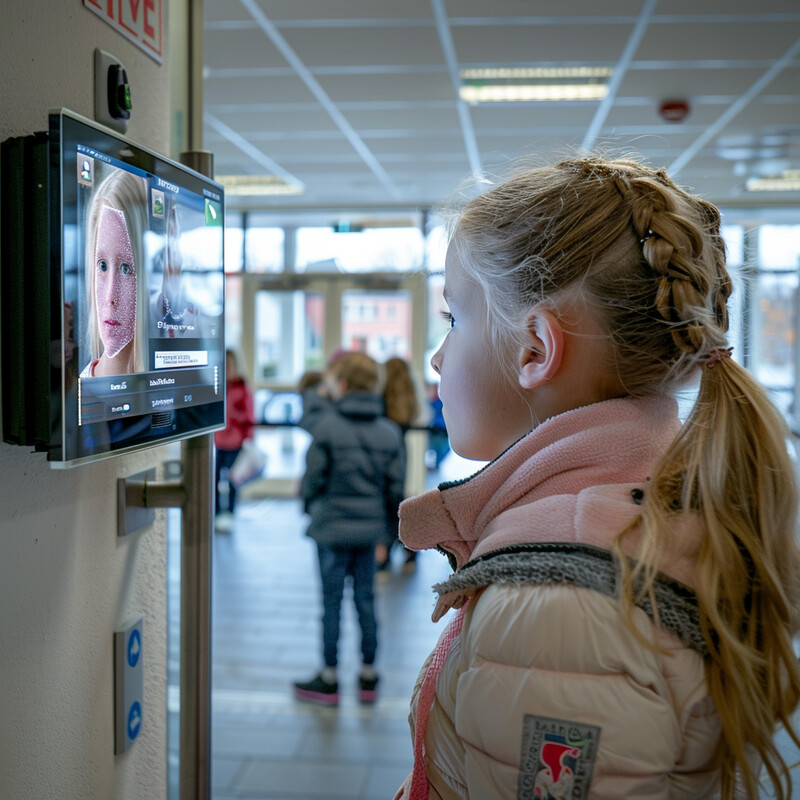
Several real-world pilot programs show how AI facial recognition is improving child safety in controlled settings. In 2023, Marion County in West Virginia became the first school district in its state to deploy an AI-driven facial recognition security system in a middle school. The system, provided by a vetted security tech company, scans everyone who enters the school and checks their face against a database of enrolled students, faculty, and authorized visitors. During its initial months of operation, school officials reported that the system successfully flagged multiple “unrecognized” entrants – in each case a person without a visitor badge – allowing staff to quickly intercept and verify the individual’s purpose on campus. The AI is configured to alert administrators if it detects a face corresponding to barred individuals (for example, an estranged parent with no pickup rights or anyone issued a no-trespass order). According to the district’s technology director, this automated vigilance has added an “extra layer of reassurance,” effectively acting as a constant lobby monitor. Similar facial recognition safety measures have been trialed in a handful of U.S. schools and summer camps, and abroad – in one case, a theme park in China used AI face-scans to successfully reunite lost children with their families within minutes. These early use cases underscore AI’s potential to bolster child security by instantly recognizing when something – or someone – is out of place.
5. Health Monitoring
AI is increasingly embedded in wearables and devices to continuously monitor children’s health and wellness. Smartwatches and fitness bands use AI algorithms to track vital signs like heart rate, sleep patterns, and activity levels, learning a child’s typical ranges and spotting irregularities that could signal a problem. For instance, if a child’s heart rate spikes abnormally or their blood oxygen drops, an AI can promptly send an alert to parents or caregivers. Beyond physical health, newer AI tools even gauge stress or mood changes – analyzing voice tone or typing patterns to detect if a child might be anxious or depressed. These systems essentially act as an always-attentive health assistant: they can remind kids to take medications on schedule, alert you if your toddler’s fever is rising at night, or even predict and warn about asthma attacks by recognizing subtle physiological cues. By catching early signs of illness or distress, AI health monitors enable faster medical responses and preventative care, ultimately aiming to keep kids healthier and safer with round-the-clock oversight that feels like a personalized safety net.
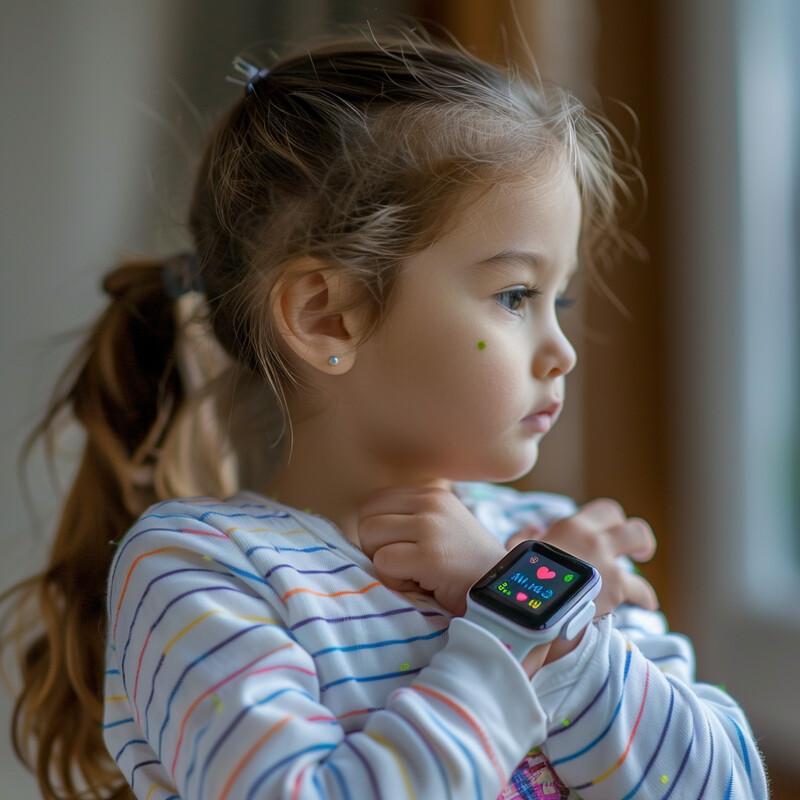
Tangible benefits of AI health monitoring for children have already been documented in medical studies and real-life incidents. In late 2023, a Stanford University-led study revealed that Apple Watch’s built-in AI algorithms were able to detect previously unrecognized heart rhythm abnormalities in 29 children, leading to those children receiving their first diagnoses of cardiac arrhythmia conditions. These were cases where traditional intermittent monitoring (like short-term EKGs or Holter monitors) had failed to catch the issue, but the smartwatch’s continuous AI analysis of heart rate irregularities succeeded. In another example, hospitals have begun using AI “early warning” systems for pediatric patients: at Cincinnati Children’s Hospital, an AI program analyzes vital signs and lab results to predict patient deteriorations hours before they are clinically apparent, prompting timely interventions by staff. On the consumer side, AI-equipped baby monitors now not only stream video but also use pattern recognition to track an infant’s breathing and sleep posture, sending an instant phone alert if a baby’s face is covered or breathing becomes irregular. These real-world outcomes show that AI health monitors do more than collect data – they actively interpret it to catch dangers early. By 2025, it’s estimated that over 30% of U.S. kids and teens will be wearing some form of health-tracking device, reflecting parents’ trust in AI to serve as an ever-watchful guardian of their children’s well-being.
6. Learning and Development Tracking
AI is transforming how we track and support children’s learning and development. Educational software powered by AI can monitor a child’s progress in real time – from academic skills like math and reading to cognitive or motor development milestones – and adapt to their individual pace. These systems analyze which concepts a child struggles with or masters quickly, then personalize the next activities or lessons accordingly (a process known as adaptive learning). For example, an AI tutoring app might give extra practice problems on fractions if it notices the child making repeated errors there, or advance them to more challenging puzzles once they’ve grasped the basics. Beyond academics, AI tools in early childhood apps can observe patterns in a toddler’s speech or play behaviors, helping flag potential developmental delays for early intervention. All this tracking happens in the background, with dashboards that summarize growth for parents and teachers – highlighting areas of strength, areas needing attention, and even predicting future performance trends. By providing this data-driven insight, AI helps adults tailor their teaching or parenting strategies to each child’s unique needs, ultimately fostering a more supportive and effective learning environment as the child grows.

Studies are beginning to quantify the impact of AI-guided learning on student outcomes. In a 2024 experiment at Harvard University, an introductory physics class incorporated a custom AI tutor chatbot for homework assistance and concept practice. The preliminary results were striking: students who used the AI tutor scored about 22% higher on post-course knowledge tests compared to peers in traditional sections, essentially demonstrating nearly double the learning gains over the semester. The AI system, which was available 24/7 to answer questions and provide step-by-step guidance, also led to significantly greater student engagement – participants reported feeling more motivated and actively involved in learning when interacting with the AI (as opposed to passively listening to lectures). At the K-12 level, public schools are seeing similar benefits from AI-driven adaptive learning programs. A large urban district in Texas piloted an AI math tutor across its middle schools in 2023; by the end of the year, standardized test pass rates in math had risen by 30% in the pilot schools, outpacing other schools, and teachers credited the software with helping identify and remediate learning gaps for each student. Such real-world implementations echo what meta-analyses are finding: AI-enhanced personalized learning consistently improves student mastery and can even shorten the time needed to reach learning objectives. Education experts predict that by 2025, AI-based learning trackers and tutors will be commonplace, working alongside teachers to ensure no child “falls through the cracks” unnoticed.
7. Automated Emergency Response
AI systems can act as automatic emergency responders for children, detecting crises and summoning help faster than humans. Various safety devices now use AI to recognize danger signals – such as the sound of a fall or a crash, signs of a fire, or even a child’s distressed cry – and immediately initiate an appropriate response. For instance, a wearable device on a child can register a sudden impact and loss of movement (indicating a hard fall or accident) and have an AI confirm it as an emergency, then dial 911 and send the child’s GPS location to first responders. In smart homes, AI-enabled sensors can distinguish between normal noise and something like a window shattering or a smoke alarm going off, and then automatically notify parents or authorities. These systems don’t get tired or hesitate: an AI camera at a pool, for example, can continuously monitor and alert if a child is in the water too long or struggling. By reacting in split-seconds, AI bridges the critical gap between the onset of an emergency and human intervention. Such automated responsiveness is especially valuable when a child is alone or cannot call for help, ensuring that accidents or health crises trigger an immediate rescue response even in the absence of an adult witness.
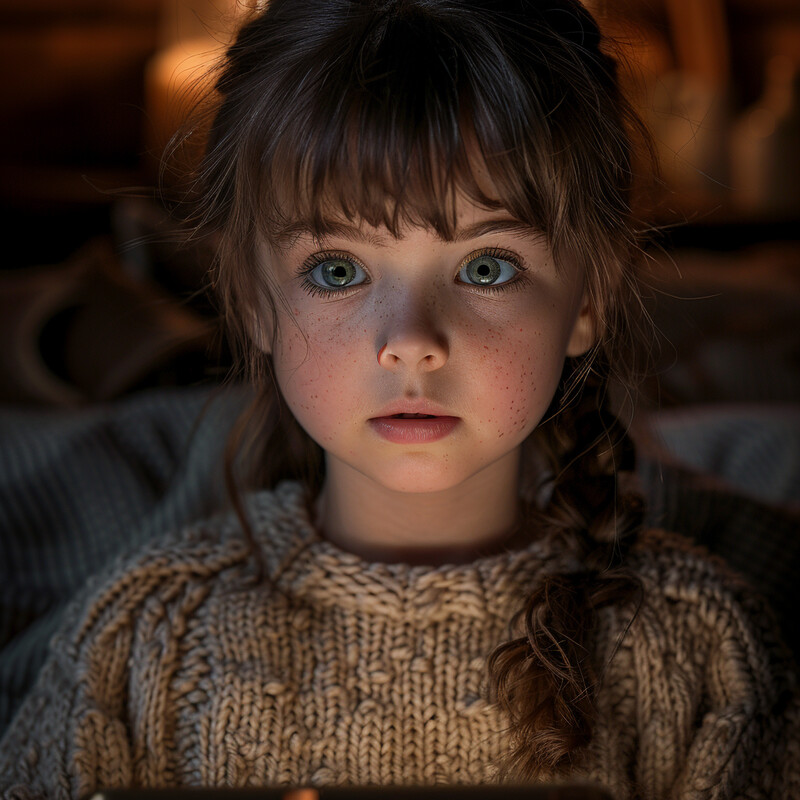
The integration of AI into emergency response has already led to numerous saved lives and improved safety metrics. One clear illustration is the Crash Detection and Fall Detection features on Apple’s latest iPhones and Watches (available since late 2022): these AI-driven algorithms have been credited with automatically calling emergency services for countless users, including children, after serious accidents. In 2023, Apple reported that its devices’ automated SOS calls successfully alerted first responders to over 100,000 incidents worldwide, many involving minors or when the user was unconscious and unable to call for help themselves. On a community-wide level, cities have adopted gunshot-detection AI to protect children from violence. ShotSpotter, an acoustic AI system, was deployed in about 170 U.S. cities by 2023 – it detects gunfire within seconds and directs police to the precise scene, often arriving minutes faster than when incidents rely solely on human 911 calls. Independent audits in Chicago and Baltimore noted that this AI technology has reduced emergency response times for shootings by an average of 1½ to 2 minutes, a window that can be life-saving for victims including children caught in gun violence. In schools, newer AI-enabled surveillance can automatically detect hazards like a student collapsing (signaling a possible health emergency) or an unauthorized person with a weapon, and then immediately trigger lockdown protocols and alerts. These examples underscore how AI’s instantaneous, automated actions in emergencies are enhancing safety – making sure help is sent or preventive measures activated in the critical moments when every second counts.
8. Interactive Safety Education
AI is making safety education for children more engaging and effective through interactive experiences. Instead of passive lectures or pamphlets, kids can now learn safety skills by interacting with AI-driven games, apps, and virtual simulations. For example, an AI in a game can guide a child through a fire evacuation drill in a virtual house – the child “plays” by finding exits and avoiding hazards, with the AI giving personalized feedback or changing the scenario difficulty based on the child’s responses. Chatbot-based programs allow kids to practice saying no to strangers or reporting bullying, with the AI role-playing as a peer or stranger and adapting its prompts to the child’s level. This interactivity keeps children more engaged and can be tailored to different ages: a younger child might learn about road safety by helping an AI animated character cross the street in a safe way, while a teen might use a VR simulation to practice safe driving habits with AI coaching them. Crucially, AI can track how the child is doing – repeating concepts they struggled with and moving ahead when they’ve mastered something. This means each child effectively gets a personalized “safety tutor” that makes learning both fun and memorable. The result is that important safety knowledge (like what to do in an earthquake, or how to recognize online scams) is retained better and kids feel more confident acting appropriately in real-world situations.
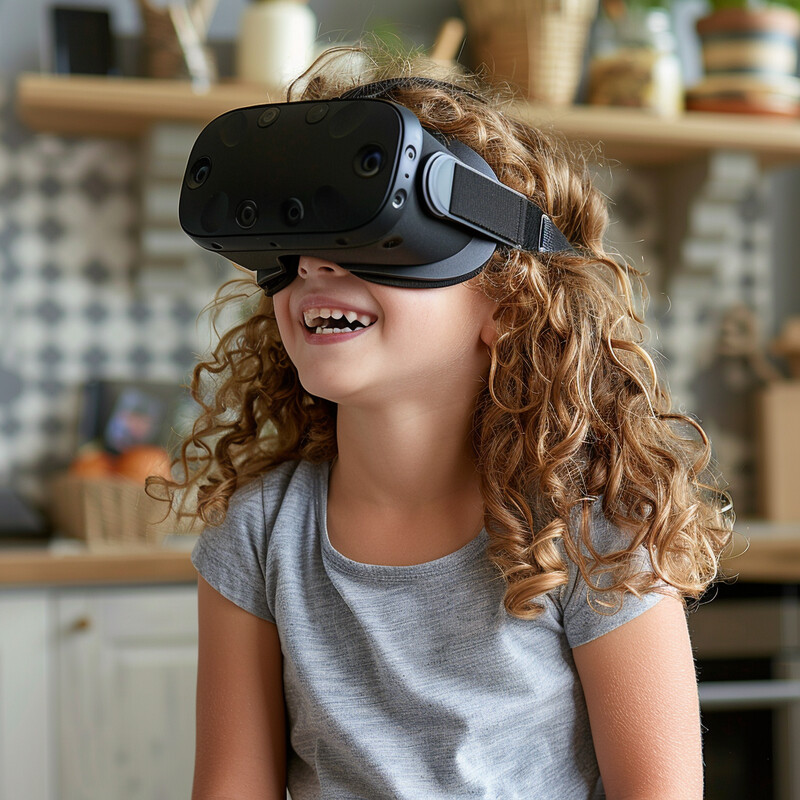
Research confirms that immersive, AI-guided training can significantly improve children’s safety skills. A 2024 randomized clinical trial, published in the Journal of Pediatric Psychology, evaluated a virtual reality (VR) program teaching pedestrian safety to young children. In this study of nearly 500 seven- and eight-year-olds, the children practiced crossing streets in a VR environment – with an AI simulating traffic and giving feedback – for multiple short sessions. The outcomes were impressive: after the training, 100% of the children were able to perform street-crossing tasks at an adult level of safety in the simulation, a huge improvement from baseline. More importantly, six months later, those children retained their skills in real-world tests – they made significantly fewer unsafe road crossings compared to kids who hadn’t used the VR trainer. Other studies have echoed these findings: a meta-analysis in 2023 found that children taught fire safety through an AI-based interactive game were two times more likely to remember how to use a fire extinguisher correctly than those taught with traditional methods. Educational organizations are taking note – for instance, the American Red Cross launched a chatbot called “Pedro” that year, which interactively teaches disaster preparedness to grade-schoolers (and saw knowledge retention rates above 80% in pilot groups). By blending play with serious learning and customizing the experience, AI-enhanced interactive programs are proving highly effective in drilling life-saving lessons into kids in a way that sticks.
9. Predictive Analytics for Risk Assessment
AI’s predictive analytics are being used to identify children who may be at risk – whether from abuse, neglect, or other hazards – so that preventive action can be taken sooner. By analyzing large datasets (social services records, school attendance, health check-ups, etc.), AI models can find patterns and risk factors that humans might miss. For instance, a predictive algorithm in child welfare might flag a combination of frequent ER visits, truancy, and prior domestic violence calls as a high-risk situation for a child, prompting a social worker to check on that family. These systems essentially act as decision-support tools for authorities: they assign risk scores or warnings to cases, helping prioritize which situations need urgent attention. In schools, similar AI tools look at factors like grades, behavior, and home environment to predict if a student might be on a path toward dropping out or self-harm, enabling counselors to intervene early. The goal is not to replace human judgment but to enhance it – giving child protection teams or school officials a “heads up” by objectively crunching vast information on past cases to spot red flags. With these predictive insights, limited resources can be focused where they’re most needed, hopefully preventing harm to children by addressing issues before they escalate.

One of the most notable implementations of predictive analytics in child safety is the Allegheny Family Screening Tool (AFST) used in Allegheny County, Pennsylvania. This machine learning model has been assisting the county’s child welfare hotline since 2016 by evaluating the risk level of each call alleging abuse or neglect. A comprehensive evaluation published in 2023 showed that the AFST has markedly improved the consistency and accuracy of screening decisions. Before AI was introduced, human screeners were mistakenly screening-in (investigating) nearly 50% of the lowest-risk cases and missing about 25% of the highest-risk cases that should have been investigated. After deploying the AI tool and related policy changes, low-risk families were significantly less likely to be subjected to needless investigations, and high-risk situations were more reliably identified – leading to an overall increase of a few percentage points in appropriate investigations of genuine abuse risks. Importantly, outcomes for children improved: within six months of an initial hotline report, cases processed with AFST guidance saw fewer repeat maltreatment referrals and a statistically significant drop in the rate of child removals into foster care, compared to outcomes prior to AFST. An independent review also found that the AI-assisted approach reduced racial disparities in decisions – for example, the gap in investigation rates between Black and white children shrank by roughly 70–90% for high-risk cases after the tool’s implementation. These data indicate that well-designed predictive analytics can make child protection more fair and effective, allowing agencies to intervene more decisively when a child is truly in danger and avoid unnecessary trauma when they are not.
10. Childproofing Smart Home Devices
AI helps “childproof” modern smart homes by automatically adjusting devices and settings to keep kids safe. As more households have internet-connected appliances, lights, speakers, and more, AI can manage these in ways that prevent accidents or unauthorized use by curious children. For example, a smart home system can use AI to recognize when a toddler is near the kitchen stove and then automatically turn off the stove or lock its controls. Voice-activated assistants like Alexa or Google Assistant now have child modes – they use voice recognition to detect a child’s voice and will refuse certain requests (like ordering products or playing explicit music) unless a parent overrides. AI-enabled doorbell cameras can distinguish between an adult and a small child stepping out the front door, and send an instant alert to a parent’s phone if a young child is exiting alone. Even Wi-Fi routers employ AI to implement schedules and filters, ensuring that a child’s devices go offline at bedtime or can’t access inappropriate content. In essence, AI serves as an unseen babysitter for your home’s technology: it continuously enforces the rules you set (and adapts as your child grows), helping to avoid household dangers and digital mischief automatically, rather than relying solely on physical locks or constant supervision.

The market for AI-driven childproofing solutions has surged as parents embrace these high-tech safety nets. A 2023 market analysis report noted a 28% increase in demand for child-safe smart home devices compared to the previous year, reflecting growing parental concerns and trust in such technology. Practical examples of AI childproofing abound. In smart kitchens, companies have introduced intelligent induction cooktops that use weight sensors and AI to detect small hands or objects – if a child climbs onto a burner or places a heavy toy there, the system will shut off power in milliseconds to prevent burns. Likewise, the latest smart TVs and speakers come with AI content filters and volume limiters: if a child account is in use, the AI will automatically filter out movies above a certain rating and cap the volume to protect young ears (no matter how much the child tries to turn it up). Parents are also leveraging AI in home security; for instance, the August Smart Lock allows them to grant temporary entry codes to babysitters or family but will alert their phone if a child tries to fiddle with the lock or leave without permission, based on unusual usage patterns. Tech giants have updated voice assistants with special dictionaries so they only give kid-appropriate responses – Google’s Assistant, for example, won’t divulge answers about mature topics and will politely dodge requests to perform disallowed actions when in kids mode. All these advancements contributed to a record number of smart home safety gadgets sold in 2023. Surveys show that over 60% of parents who use AI childproofing features report feeling more secure at home, as these systems can preemptively stop many common accidents (like toddlers wandering out or accessing cleaning supplies) before they happen. As one parent noted in a Consumer Reports interview, “The smart in smart home now means smart for kids – our home essentially learns and reacts to keep our children out of trouble, which has been a game changer for our family’s safety.”